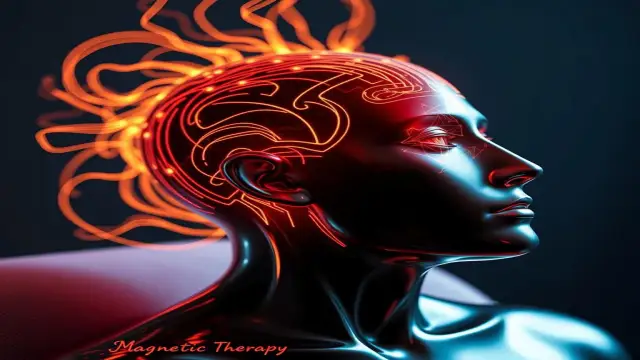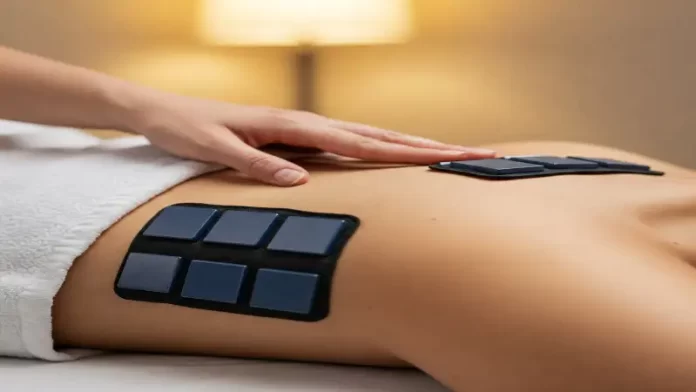Table of Contents
Unlocking the Pull: Could Magnetic Therapy Be Your Missing Link for Pain Relief?
Pain. Inflammation. That nagging ache in your knee, the stiffness in your back… sound familiar? In our quest for feeling better, many of us look beyond the usual pill bottle, exploring alternative paths to wellness. And one that keeps popping up, shrouded in a bit of mystery and debate, is magnetic therapy. You might have seen ads for magnetic bracelets, knee wraps, or even mattress pads, all claiming to harness the power of magnets for health benefits. But what’s the real deal? Is this just a gimmick, or is there something genuinely therapeutic about these unassuming pieces of metal? And what about Magnetic Acupuncture is that even a thing?
Let’s dive into the world of magnet therapy for pain and inflammation. We’ll explore how it supposedly works, how to use acupressure magnets, especially for common complaints like knee pain, look into potential magnetic therapy side effects, and see where it fits within practices like naturopathy. Ready to separate the facts from the fiction (or at least, the scientifically proven from the anecdotal)? Let’s get started.
So, What Exactly Is This Magnetic Thing Anyway? The Lowdown
At its core, magnetic therapy involves using static magnets meaning magnets with a magnetic field that doesn’t change or move placed on the body with the aim of producing therapeutic benefits. This is quite different than the powerful, dynamic electromagnetic fields used in conventional medical technologies like MRI machines. We’re usually talking about simple, permanent magnets embedded in various carriers.
The idea often gets linked with concepts from traditional medicine, particularly Traditional Chinese Medicine (TCM). Sometimes you’ll hear the term Magnetic Acupuncture. This isn’t about sticking magnetized needles into you (ouch!). Rather, it typically means placing small, powerful static magnets on specific acupressure points those same points targeted in acupuncture and acupressure. The thinking, borrowed from TCM, is that this might help influence the flow of vital energy (often called Qi or Chi) through the body’s meridians, potentially restoring balance and easing discomfort. Its use dates back centuries in various cultures, long before we understood the physics of magnetism.
Many Magnetic therapy products are designed with this in mind, like small spot magnets with adhesive backing meant for precise placement. It’s seen by proponents as a non invasive way to stimulate these points without needles.

The Million Dollar Question: Does It Actually Work for Pain and Inflammation?
This is where things get… complicated. If you ask people who swear by magnetic bracelets or knee straps, you’ll often hear enthusiastic testimonials about reduced pain and improved mobility. Many users reports feeling significant relief, particularly for chronic conditions like arthritis or back pain. The proposed theories behind why it might work often involve magnets increasing blood flow to the area (carrying away inflammatory substances and bringing oxygen) or potentially altering nerve cell signals to reduce pain perception. Sounds plausible, right?
However, from a strict scientific standpoint, the evidence is mixed and largely inconclusive for most conditions. Rigorous, large scale studies have often struggled to show that static magnets are significantly more effective than placebo (dummy magnets). The placebo effect itself is powerful, especially with pain if you believe something will help, it often does, at least temporarily!
That doesn’t necessarily mean it doesn’t work for anyone. Some smaller studies have suggested potential modest benefits for specific types of pain, like osteoarthritis knee pain or diabetic neuropathy. But the scientific community generally agrees that much more high quality research is needed before magnetic therapy can be considered a proven treatment for pain and inflammation. So, should you dismiss it entirely? Not necessarily. But it’s wise to approach the claims with a healthy dose of skepticism, understanding that much of the perceived benefit might be placebo or related to other factors (like the support provided by a brace the magnet is embedded in). Its important to weigh the evidence.
Getting Practical: How to Use Acupressure Magnets (Especially for That Cranky Knee)
Okay, let’s say you’re curious and want to give it a try. How to use Acupressure magnets? Generally, the principle is simple: place the magnet directly over the area of pain or on relevant acupressure points.
- Identify the Spot: Where does it hurt? For general pain, placing the magnet directly on the most tender spot is common.
- Acupressure Points: If you’re trying the “magnetic acupuncture” angle, you might need a chart or guidance (from a practitioner or detailed product instructions) to find specific points related to your condition.
- Example: Where to place magnets for knee pain? This is a super common question. People often try placing magnets around the kneecap (patella) perhaps one on either side, one above, one below. Or they might target specific tender points they can feel around the joint. Some magnetic knee straps have magnets strategically embedded for this purpose. There’s no single “right” answer, as placement might depend on the type of knee pain.
- Magnet Types: You’ll find various magnetic therapy products:
- Spot Magnets: Small, often powerful neodymium magnets with adhesive backing for targeted application.
- Jewelry: Bracelets and necklaces are popular, though the magnetic field reaching target tissues might be weak.
- Wraps and Braces: For knees, back, wrists etc., often combining magnetic therapy with physical support.
- Insoles: Magnets embedded in shoe inserts, aiming to stimulate points on the feet.
- Mattress Pads/Pillows: Larger products with multiple magnets for overnight use.
- Strength & Polarity: Magnets are measured in gauss. Therapeutic magnets range widely, from a few hundred to several thousand gauss. Some theories emphasize using a specific pole (North or South) facing the skin, but scientific evidence for this distinction is thin. Always follow the manufacturer’s instructions regarding duration of use and placement.
Finding the best magnetic therapy products often comes down to personal preference, the area you want to treat, and trial and error.
Playing it Safe: Are There Magnetic Therapy Side Effects?
Here’s some relatively good news: for most people, using static magnetic therapy products externally is considered very safe. It’s non invasive, drug free, and typically doesn’t cause significant issues. However, “most people” isn’t everyone, and there are crucial exceptions and minor points to consider.
- THE BIG WARNING: Magnets can interfere with certain medical devices. If you have a pacemaker, insulin pump, defibrillator, or other implanted electronic device, you should generally AVOID magnetic therapy, especially near the device. The magnetic field could potentially affect its function. This is the most critical safety concern. Always check with your doctor if you have any implanted devices.
- Pregnancy: While no specific harm has been proven, most practitioners advise against using magnetic therapy during pregnancy as a precaution.
- Skin Irritation: Some people might experience redness or irritation from the adhesive used with spot magnets or from the material of a wrap or bracelet. This is usually mild and resolves when the product is removed.
- Other Minor Effects: Very occasionally, some individuals report temporary dizziness, nausea, or a tingling sensation, especially when first using stronger magnets. These effects are generally rare and mild.
Compared to medications or surgery, magnetic therapy has far lesser known side effects. But the warning about electronic implants is absolute. Always prioritize safety and consult your doctor.
The Bigger Picture: Magnet Therapy in Naturopathy & Final Thoughts
Where does magnetic therapy fit into the broader wellness landscape? It’s often embraced within magnet therapy in naturopathy and other holistic health systems. Naturopathic practitioners focus on supporting the body’s innate healing abilities using natural, often non invasive methods. From this perspective, magnetic therapy aligns well it’s drug free, aims to restore balance (whether viewed as energy flow or physiological function), and is generally gentle. Ensure you’re choice of practitioner is well vetted if you go this route.
So, what’s the final verdict? Magnetic therapy remains an intriguing field. It boasts a long history, countless anecdotal success stories, and a range of readily available products. It may offer some people relief, particularly for certain types of musculoskeletal pain, possibly through a combination of placebo effect, subtle physiological changes (like microcirculation improvements), or stimulation of acupressure points.
However, it’s not a magic cure all, and the robust scientific evidence backing many of its claims is still lacking. Approach it with open minded skepticism. Consider it a potential complementary therapy to try alongside conventional treatments (after checking with your doctor), rather than a replacement for them.
Key Takeaways:
- Be Informed: Understand it’s largely based on traditional use and anecdotal reports, not strong scientific proof for most conditions.
- Safety First: Crucially, avoid use if you have a pacemaker or other implanted electronic device. Consult your doctor if pregnant or have serious health conditions.
- Manage Expectations: Don’t expect miracles. It might help, it might not.
- Listen to Your Body: If you try it, pay attention to how you feel. Discontinue if you experience adverse effects.
Ultimately, deciding whether to try magnetic therapy is a personal choice. Weigh the potential (though often unproven) benefits against the low risk (for most people) and the cost. Perhaps the gentle, persistent pull of magnets holds a piece of your wellness puzzle or perhaps not. The exploration itself can be part of the journey.

